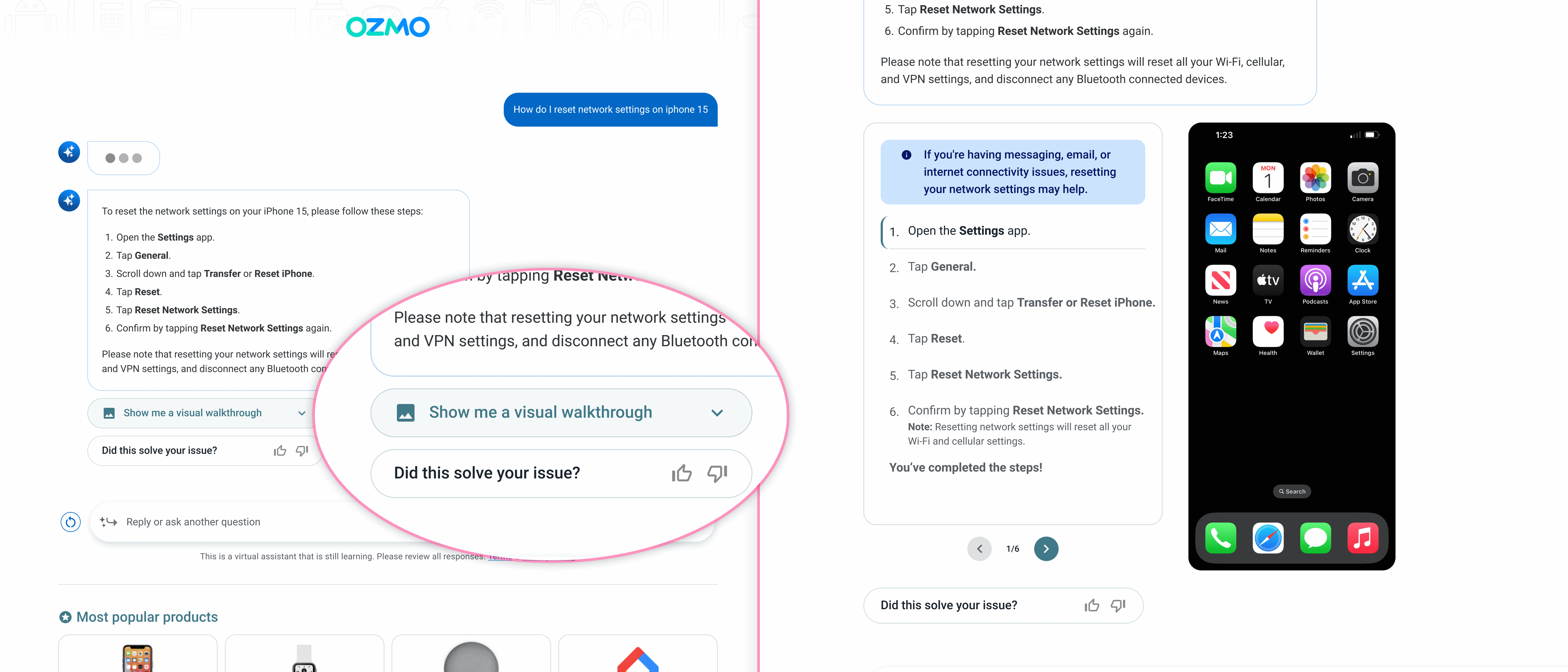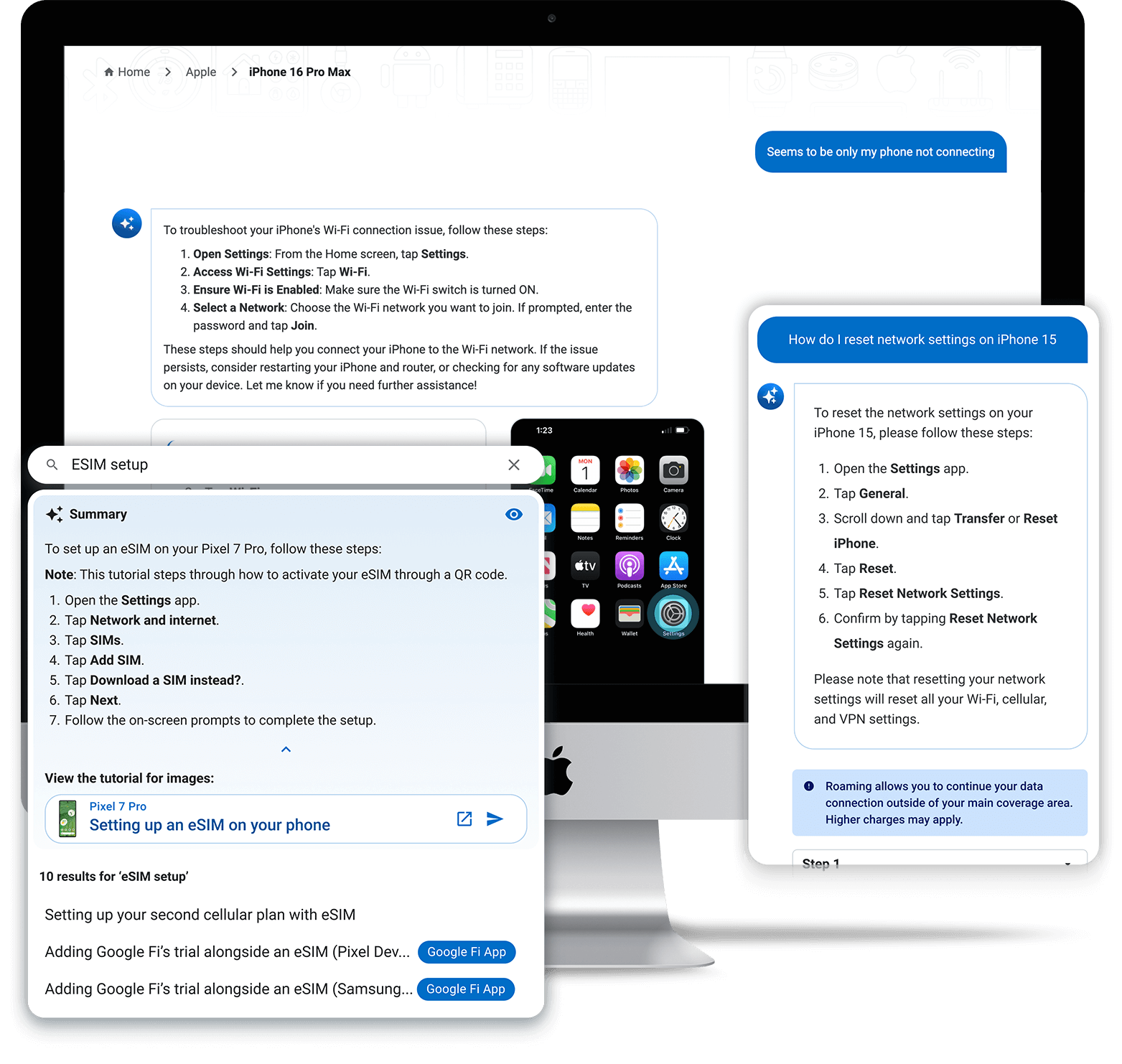
-
Ozmo /
-
Conversational Artificial Intelligence
Ozmo
One of Ozmo's tech support solutions is an integratabtle Self Support product. This product offers our customers a robust library of support content and troubleshooting solutions aided by a Conversational AI that can be easily placed into their respective support ecosystem.
View the full Self Serve product here.
-
Problem(s):
Self support users are typically seeking solutions oriented around their issue, not necessarily their device. Ozmo wanted to take advantage of emerging LLM technology to create a conversational search experience that could aid users in disambiguation of their issue while providing solutions more efficiently.
-
🖼️ 64%
Preferred visuals
-
🔬 1,000s
Conversations analyzed
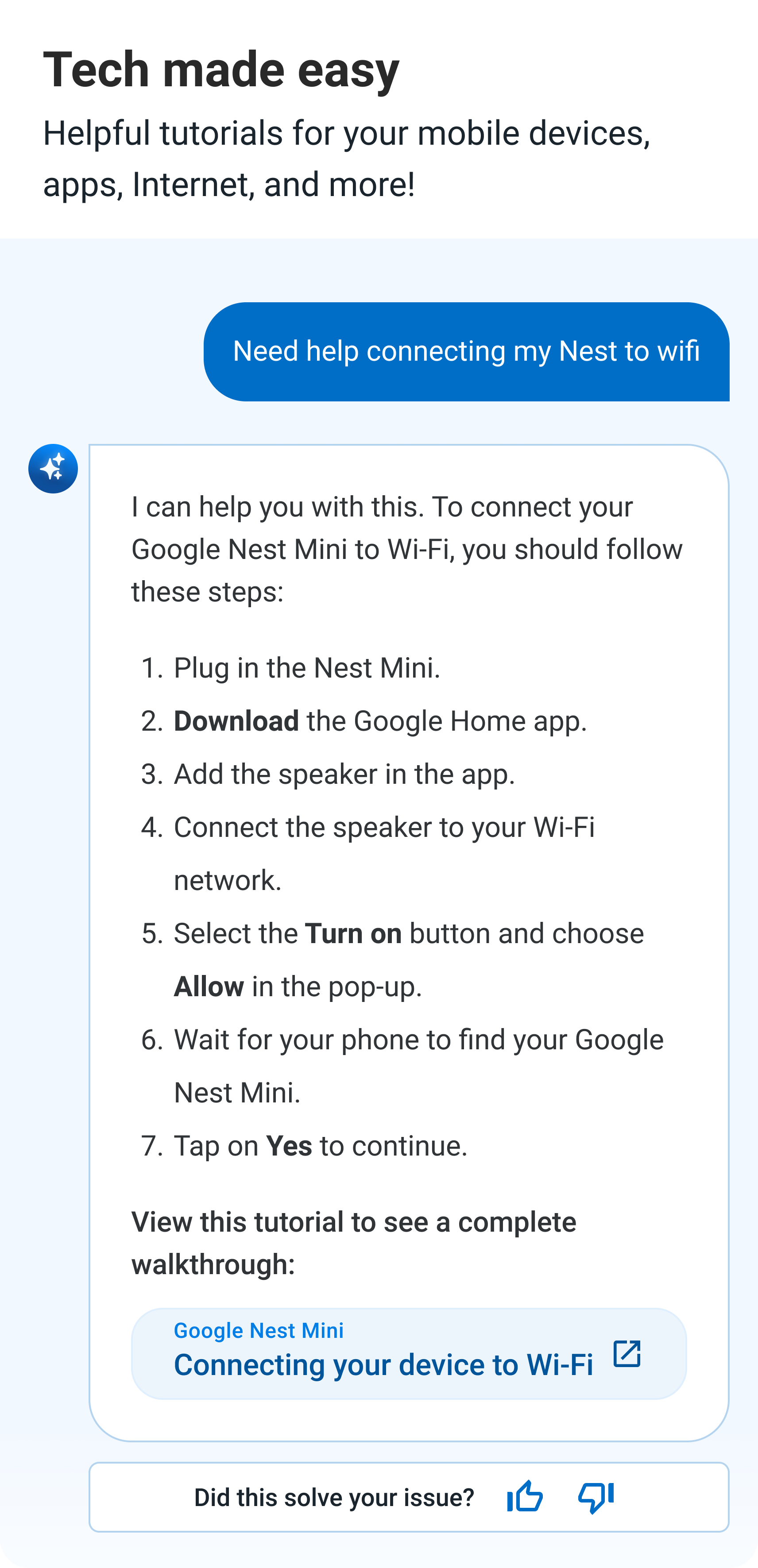
-
✉ Contact me to discuss this product and work in more detail.

Weaving AI into Self Support
-
With the surge in Artificial Intelligence, Ozmo seized the opportunity to build and design it's own support conversational search. At this juncture in the product’s capabilities, the Self Serve experience offered several means for consumers to browse and search for an answer that met their needs. With the introduction of our conversational search, problem-postured solutioning became a reality for the first time.
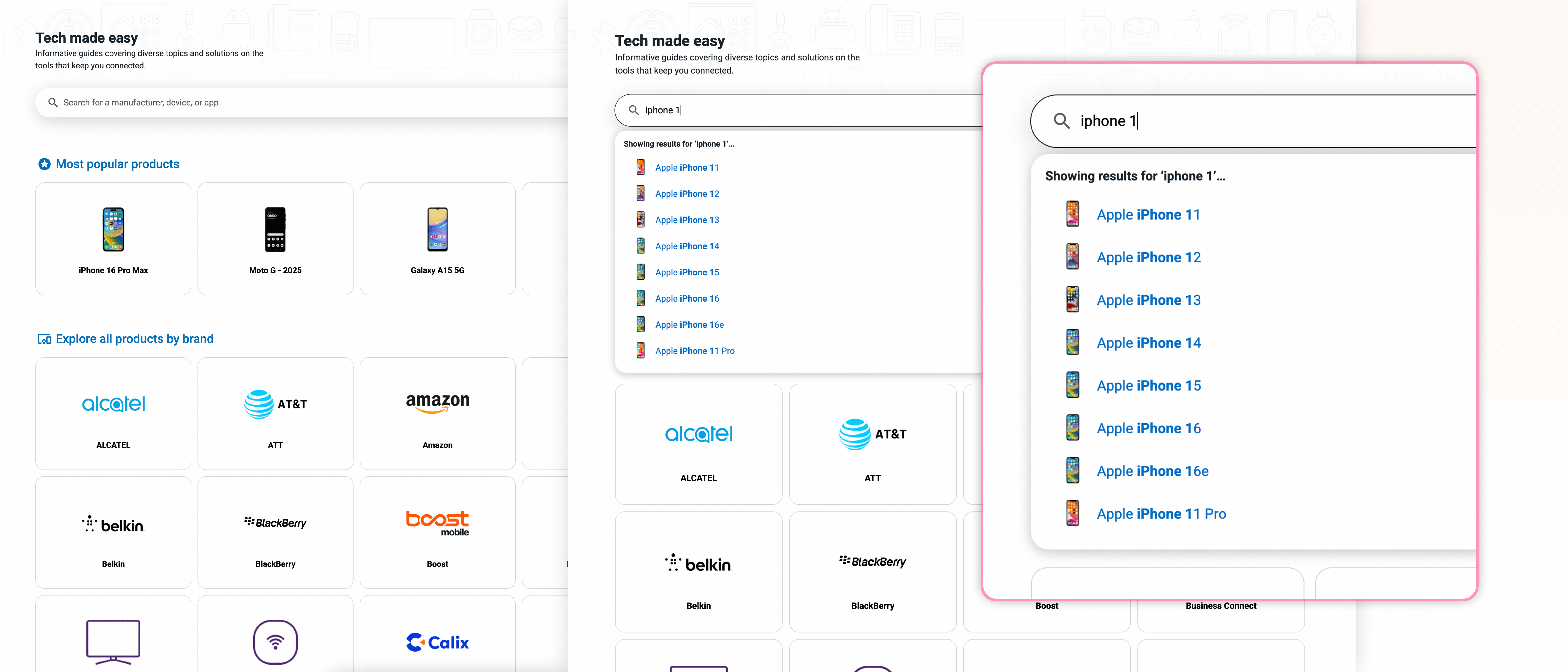
Our previous landing view where a traditional filter-style search
-
As the prompt engineering and LLM magic came together around our pool of content and tutorials, my team and I dug into deep research of conversational experiences. Knowing how our product is integrated into our customer’s support ecosystems, it was clear their existing chatbots would perpetuate alongside any AI we introduced. With this awareness, we set out with a clear goal of not compounding the experience with an additional, competitive chatbot experience.
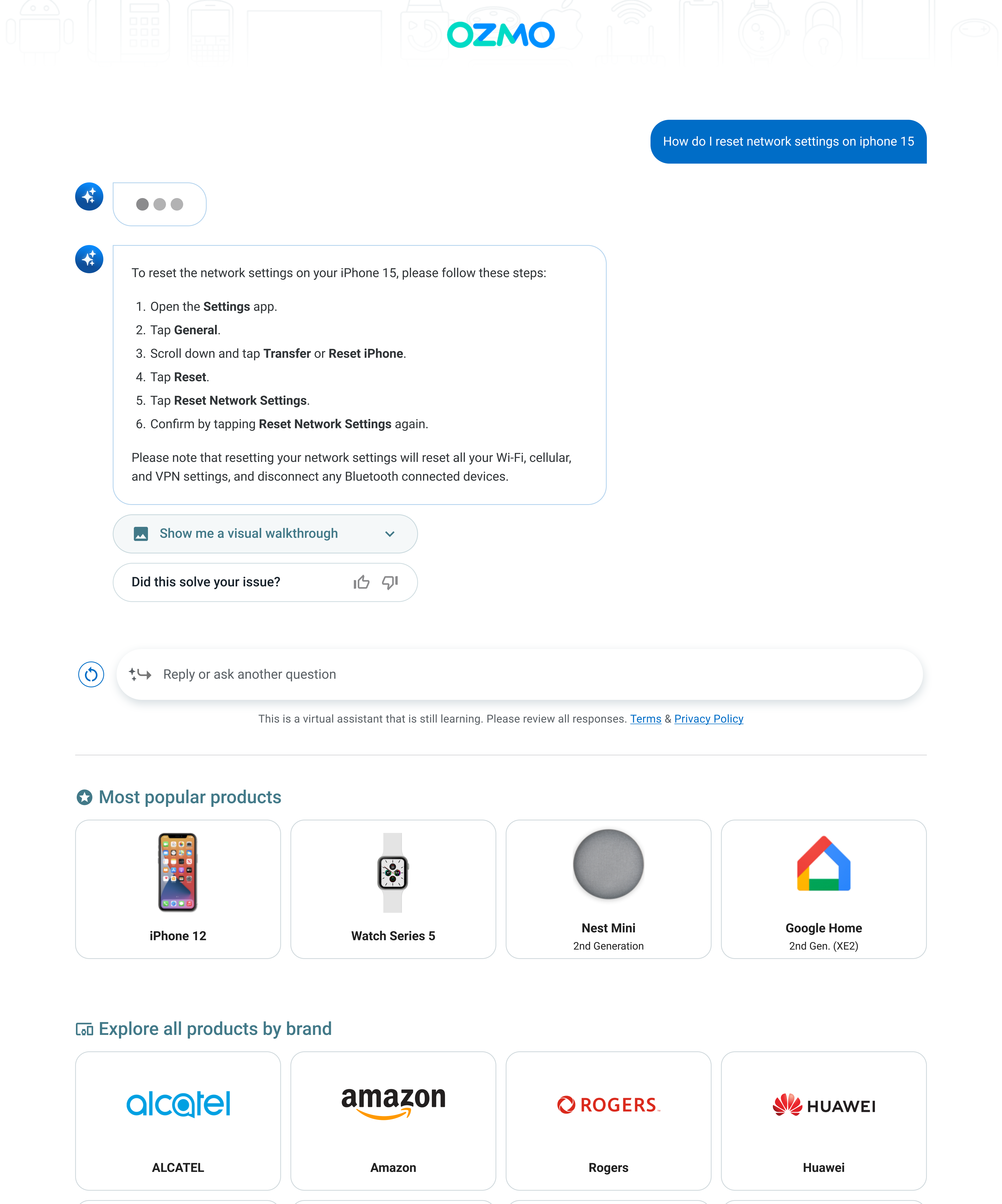
Our new conversational search taking the place of our previous search.

Stepping through our solution
-
On top of researching conversational experiences and patterns, we also performed several rounds of discovery-oriented user testing and research - amassing preferences and opinions for a support-oriented conversational interface. We studied aspects of text-based conversations, looking for opportunities to enhance a support solution. Things like tone, brevity, clarity and supporting elements like visuals and videos were all discussed and explored.
⇩
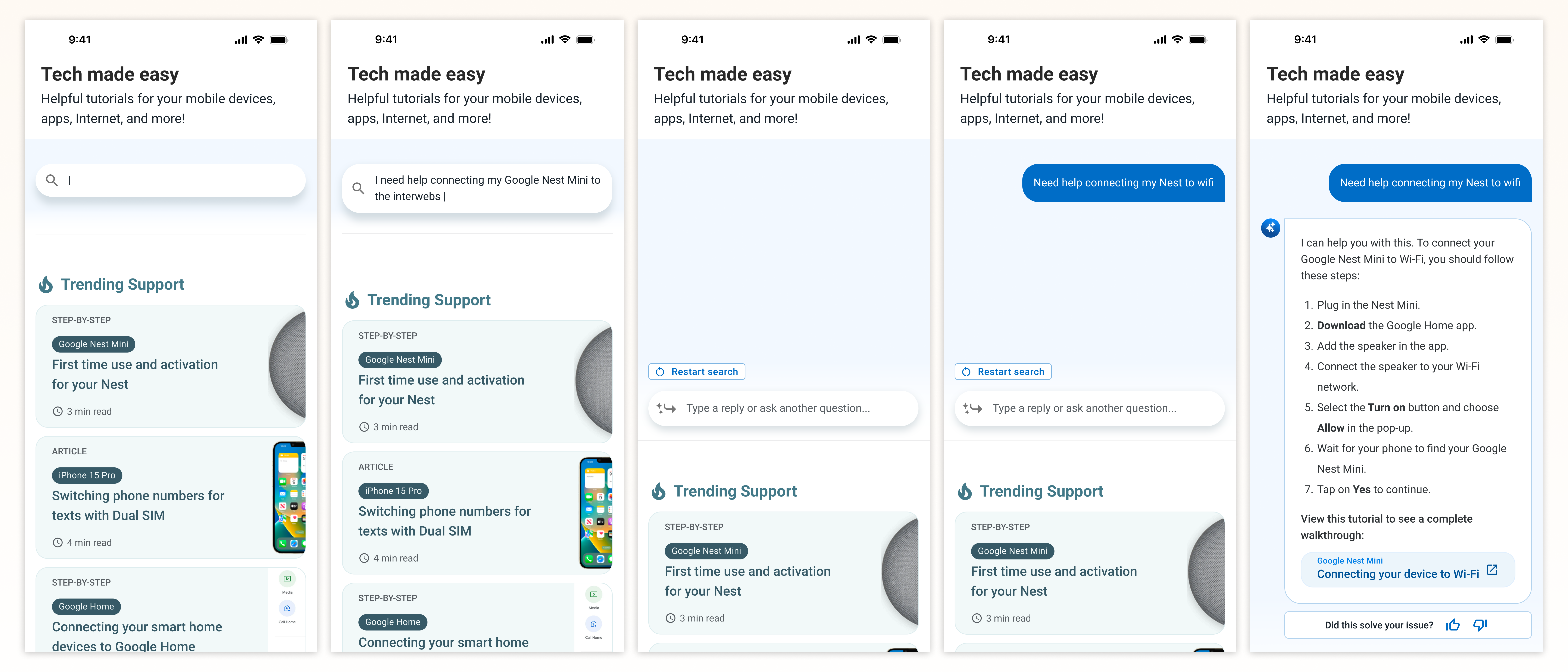
A series depicting the conversation expanding within the product.
With insights and data in hand, my team and I envisioned a search experience that expanded within our product to react and conversate around a user’s support needs. We acknowledged some of the feedback we heard - not everyone wants to discuss their problem to find an answer, they know exactly what they’re looking for. A lot of users appreciate having a centralized experience - "adapt to me rather than force me to decide where to go next." Rather than leave or detract from the existing browse experience, we wanted to preserve those abilities and pathways for users while enabling a new, conversational form of finding resolution.
⇩
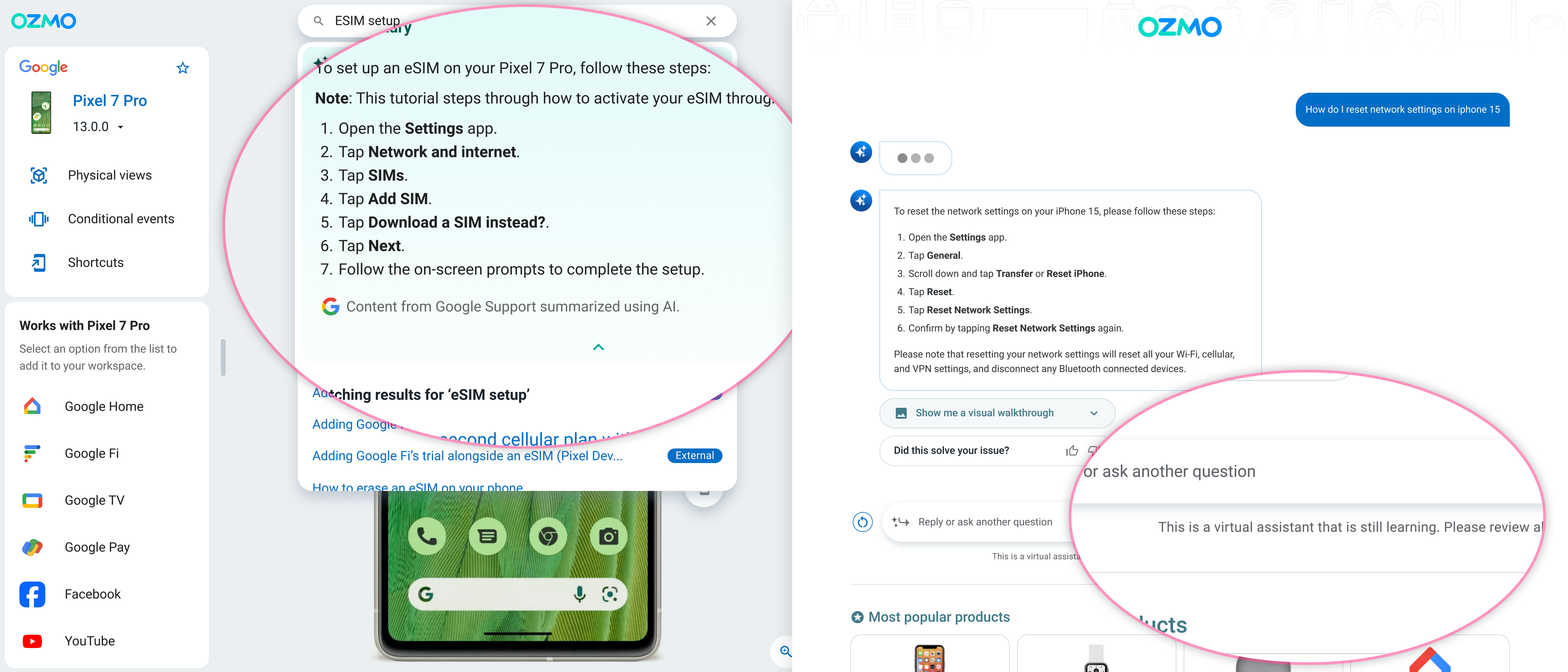
These views depict the states that an agent will see as the customer joins.
On top of researching conversational experiences, we also included insights we uncovered about how to approach UX considering AI. I encouraged an ethical approach - ensuring we addressed transparency with our use of artificial intelligence. Little details like revealing our sources and providing links to the full content became facets of our solution.
⇩
-
Ultimately we implemented an experience that empowered users to retain their choice in how they prefer to disambiguate their solution. As we introduced this new conversational experience within our product - we continued to perform user testing and iterate. The experience today offers our tutorials within the conversation itself as an optional visual aid with the text-based conversation.
We continue to monitor and measure aspects of the conversations and how it influences users as they find solutions to their tech support needs. We’ve already seen impactful changes to our key metrics - like how helpful our users feel our content is and are continuing to improve both our content and users’ opportunities to disambiguate their issue to solution.
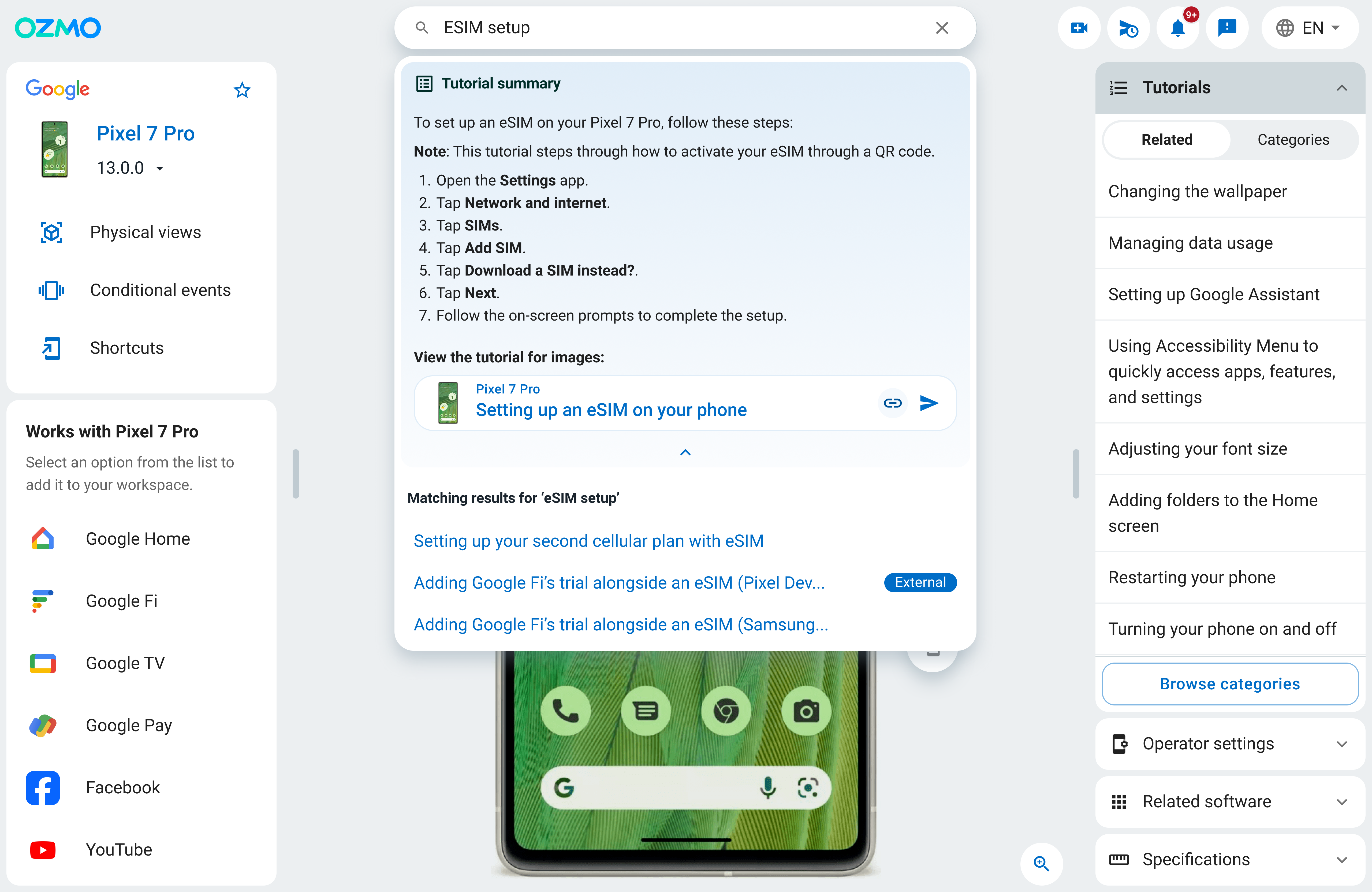
Most recently, we've begun introducing the enhanced search features into our agent-facing product.

